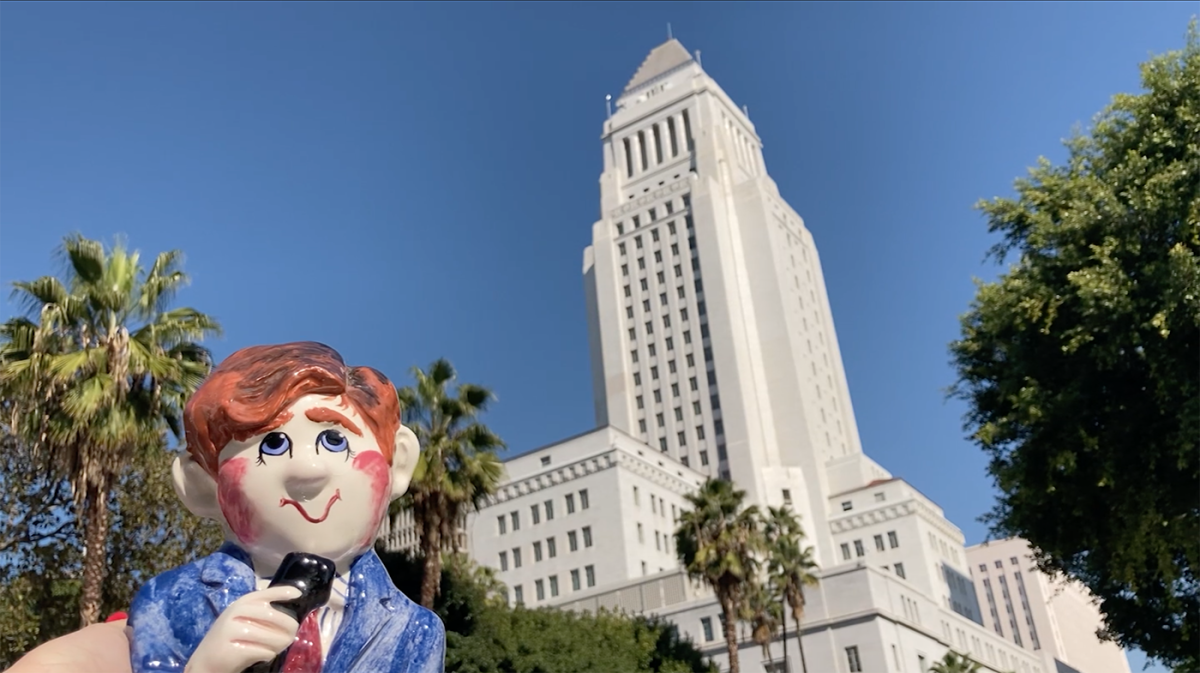
LOS ANGELES — “How do you define government?” “Why aren’t things more accessible?” “Where does the government go from here?” These questions form the premise of an ambitious new project by Paul Pescador, titled PSA, now on view at the Institute of Contemporary Art, Los Angeles (ICA LA). In a series of 12 Public Service Announcement-style videos, Pescador layers their own personal experience together with interview clips gathered from various government workers and experts, screen recordings, and footage of public spaces and institutions around Los Angeles to present a complex view of the US government.
The series aims to serve as a crash course in government, educating the viewer on everything from the basic functions of the US government, to how to get involved, to the rights and the role of the citizen. Deceptively simple as they may appear, the questions that Pescador poses quickly unravel into a nightmarishly complex knot of existential crises. Like an inkblot test, PSA changes with each viewing. Depending on its context — in the gallery or online, the news cycle of the day, the overarching political moment, and of course, the political background of the viewer — one’s reading of the piece ranges from patronizing and redundant to informative and accessible, from cynical and frustrated with the system to optimistic and empowered to do something about it. Indeed, the work does more to reveal the viewer’s own understanding of the government and their relationship to it, than it does uncovering the mechanisms of government.

One of the thorniest issues with the project’s premise lies within the title itself: PSA, short for Public Service Announcement. The title begs the question, who exactly is the public? Like the very idea of government, the “public” is one that is equally abstract and equally loaded. Although Pescador never explicitly defines who their public is, PSA nonetheless speaks volumes on behalf of the artist, responding to the perceived needs, education levels, and knowledge (or lack thereof) of Pescador’s imagined public.
By extension, PSA also reflects the ICA LA’s conception of the public, drawing into fray the museum itself and its role as a public institution. Art historian Carol Duncan writes about the hidden function of museums as one of initiating the public into a “political passivity of citizenship,” both serving to inform citizens of the history and narratives of the state, as well as serving the government in their commitment to the public. In other words, the art museum is oftentimes more concerned with the representation of politics than the politics of representation, thus giving “citizenship and civic virtue a content without having to redistribute real power.”

PSA raises more questions than it answers — questions about government, to be sure, but also what it means to be a member of the public, for whom the museum exists, and what the role of the artist is in mediating the relationship between the public and the institution. “I’ve always tried to understand how these systems operate, and how I can be involved in them. This desire to be involved, in some way, trying to educate myself, [feeling] the same joys and frustrations as others with these systems and, well, never giving up on their importance,” Pescador shares in one video. What is undeniable is the artist’s earnestness and honesty. It is these qualities that anchor the Sisyphean endeavor behind PSA and keep it from feeling flippant, or worse, like an empty gesture, and instead, one that is full of nuance, misgivings, and surprisingly enough, hope.
Paul Pescador: PSA continues at the Institute of Contemporary Art Los Angeles (ICA LA) (1717 E 7th Street, Downtown, Los Angeles) through May 30.
0 Commentaires